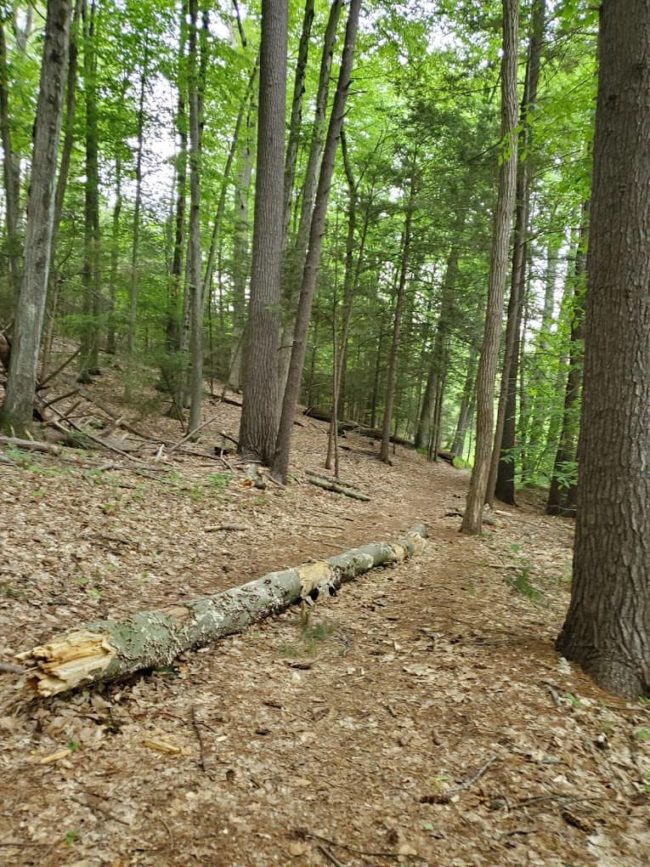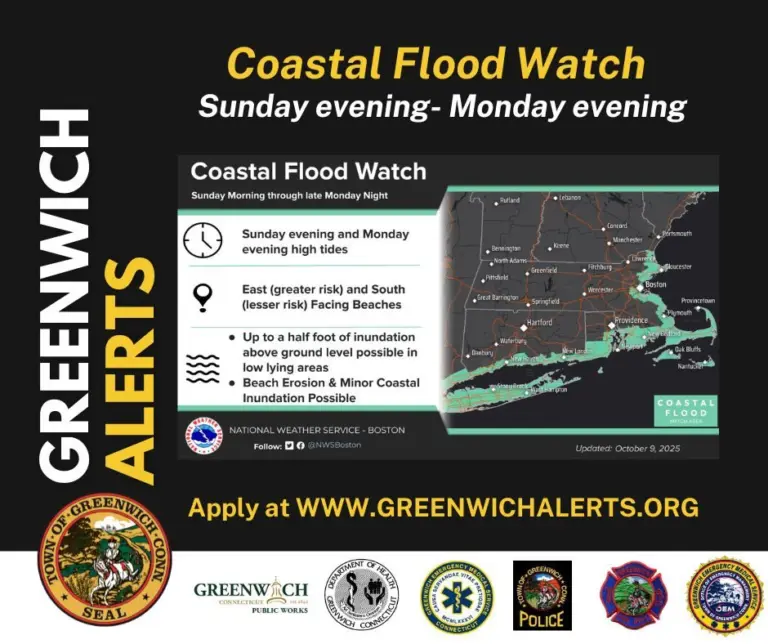By Anne W. Semmes

Just how vital trees and forests are to our brain health and welfare was spelled out most convincingly last Thursday week at the kickoff meeting of the Town’s Sustainability Committee’s 2023-2024 Speaker Series with 70 attendees at Second Congregational Church. The speaker wore an impressive number of hats, as neuroscientist Dr. Susan Masino is the Vernon D. Roosa Professor of Applied Science at Trinity College. She was introduced by Urling Searle who heads up the Greenwich Tree Conservancy as having been awarded Harvard University’s Charles Malman Research Fellowship in Forest Research. “Her work helps scientifically quantify the benefits that we all enjoy walking in the woods,” noted Searle.
“So, I have boiled my life down to two things,” began Masino, “The first one is we need nature, but sometimes we get distracted by all other kinds of things… And until we move to Mars providing us with everything that we need, we cannot lose sight of that. And the other thing is we need healthy brains.” Masino would share some current medical research on just how that walk in the woods affects our brains, but she wanted to mention the other hats she wears.
With a special interest in New England’s forests, Masino serves on the board of the Pinchot Institute for Conservation. “Many have heard of Gifford Pinchot, founder of the Forest Service. He was actually born in Simsbury, Connecticut where I live now, and I’m the county coordinator for Hartford County for the Old Growth Forest Network, which is a national organization dedicated to designating at least one forest in every county that is or will become an old growth forest.”
[Presently there is no Old Growth Forest in Fairfield County. Four counties have one: Litchfield, New London, Hartford and Tolland with a total of 441 acres.]
But Masino has an initiative she has co-authored called Wildlands in New England that identifies “where are the areas that we have prioritized for nature in New England. And in the report, we defined wildlands, talked about the history, where we’re at, where we should be going…We defined wildlands as any size and condition permanently protected from development.” And in that report are the benefits of that protected wildland: “Climate stability, keeping the climate stable from temperature fluctuations to prevent extinction…the ability of nature to adapt and be resilient. And we shouldn’t discount the power of these natural spaces to provide us with awe and beauty.”
“But here’s the really bad news,” alerted Masino, showing a map of Connecticut. “If you look at how much has strong long-term protection, less than one percent of Connecticut is wildlands. We have farmland that’s protected, we have parks.” But she added, “If anyone knows of other wildland areas, we’re open to new submissions.”
And just what are the medical benefits to the brain walking in those wildlands? “So, one of the problems we have in neurology,” she said, “is most of the drugs we have are masking symptoms. There are very few drugs that we have curing serious neurological diseases. So, anything that has lasting benefits is something that may prevent or delay disease or possibly cure disease by unbending that process.”
For example, she shared findings from a paper that focused on “rumination and activity in the prefrontal cortex. So, the prefrontal cortex is sort of your executive area where you plan what you’re doing. And what they found was that with people that went on a 90-minute walk in nature versus in an urban setting, there was much less rumination after the nature walk and no change after walking in the urban setting.”
She told of a nature walk she took her students all wearing “heart rate variability monitors. And so, this monitors the tiny difference in timing between your heart rate…It’s kind of a measure of your autonomic system resilience, your resilience to stress. And it was remarkable. The students were consistent that they found a big increase [in that resilience] when we went into the forest and then went out of the forest again.”
There was that study in Ireland: “They had subjects diagnosed with ‘mental ill health’. Over 13 weeks, they had small groups go to a national park each week and they did standardized tests for depression and psychological testing. After 13 weeks just going on this weekly walk, they found that their improvements in depression and psychological state was equal to or better than having gone individually to a therapist once or twice a week.”
And in the UK, there was that sizeable study of 3,500 pre-adolescents and adolescents. “They divided green space into woodland forest areas versus parks. And what they found regarding cognitive development and reduced risk for emotional and behavior problems, was that spending time in the woodland area was more important and significantly better than grassland.”
Masino concluded with a promising statewide effort. “Connecticut is in the process of doing their green plan,” she said, and “Wildlands should be the backbone of the green plan. We should fit other things around these key pieces, and we can add to and connect existing areas.
Connections are really important. It’s not that difficult to identify ideal areas. We need to protect our water. Our headwaters have no protection. We need to protect our old forests – our old growth forests have no protection. We need to protect our special habitats and wildlife borders.”
Masino wrapped up with a favorite quote that’s been on the kitchen wall of her garage, perhaps she said since the garage was built in 1931. “It’s a simple one, ‘In Essentials, Unity.’ We need to think about how we are all going to go forward with healthy land and water for everyone, that these forest ecosystems are about the whole picture, the tiny things, the bigger things, the whole system. And they’re essential to life on earth as we know it.”




